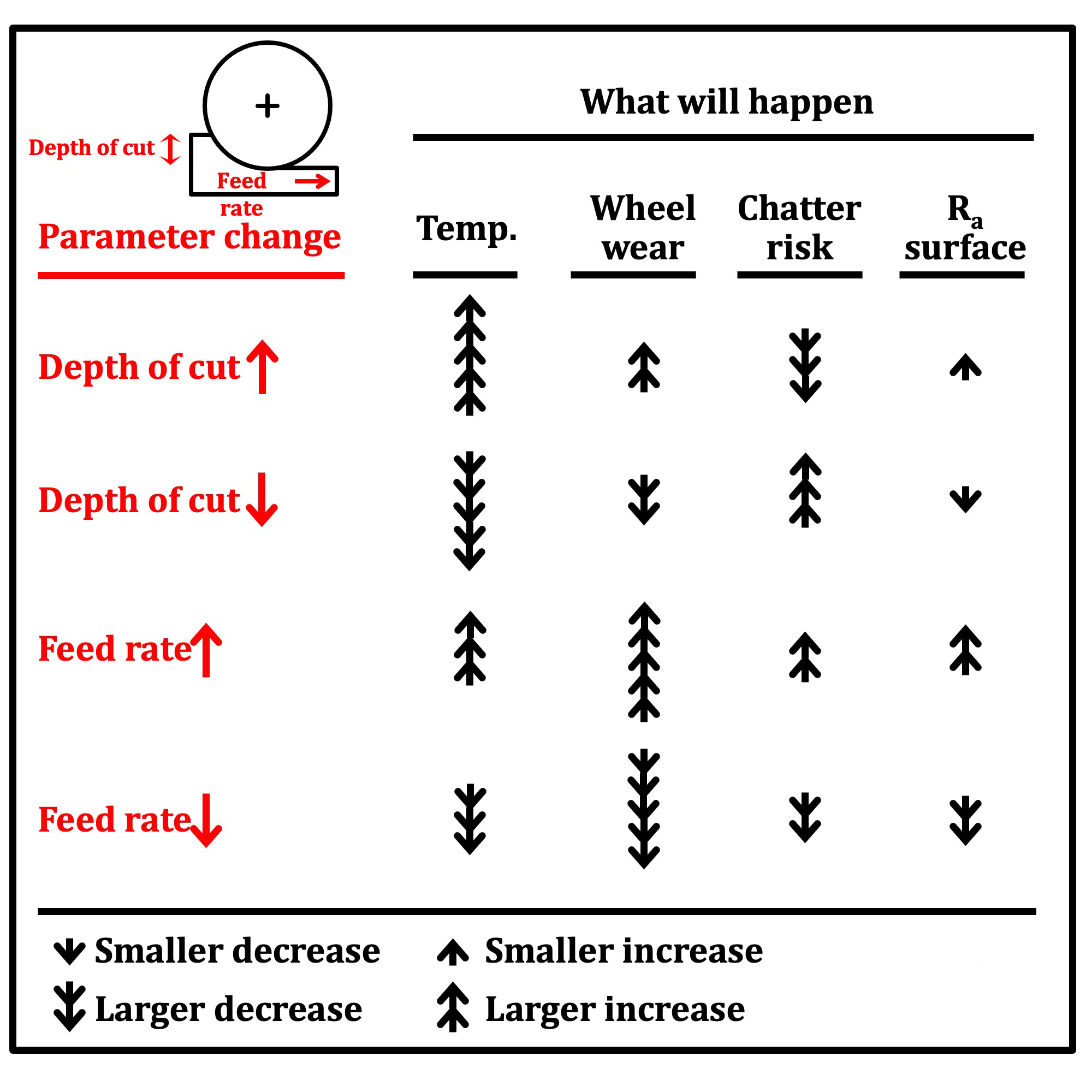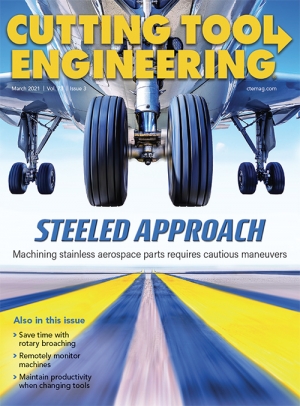Dear Doc: We surface-grind, and there’s disagreement at the shop. When increasing stock removal, is it better to increase the feed rate or the depth of cut?
The Doc replies: The answer is the always popular “It depends.” It depends on what’s your biggest issue, as in “If I keep pushing it, what am I most worried about: thermal damage, chatter or excessive wheel wear?”
If your main problem is grinding burn, increase the feed rate, or table speed. Temperatures will increase but not as much as if you increase the DOC. If your principal concern is chatter, increase the DOC. If your biggest issue is wheel wear, increase your DOC.

All this is for a fixed wheel speed. But for major improvements, I’d prefer that you take my course and learn the concepts of Q-prime and aggressiveness and how to use The Grinder’s Toolbox to manipulate multiple parameters at once (DOC, feed rate and wheel speed). Also, some of these differences are small, and some are large. For example, increasing your feed rate will increase your temperature somewhat but increase your wheel wear a lot. The figure shows relative values.
Dear Doc: We use both resin-bonded and electroplated CBN wheels. When mounting a new wheel, do we need to “tap in” the wheel to minimize runout or just mount the wheel and start running?
The Doc replies: For resin-bonded wheels, tapping in is usually not necessary. After mounting, the wheel will be eccentric because the wheel bore diameter is larger than the shaft diameter — that is, there is “play.” That’s not a problem. Dressing removes that eccentricity and almost all the imbalance associated with it. When you go to grind, you won’t be banging on the high point of the wheel.
But with electroplated wheels, you never dress. Therefore, any eccentricity after mounting — there’s always eccentricity — will cause the wheel to bang on the high point until it wears away. If there’s a lot of eccentricity, you might bang for weeks before the high point is removed, which means possible chatter and more wheel wear. So mount a dial gauge and tap away that eccentricity the best you can. You’ll never make it perfect, but you’ll make it better. And better might just increase your electroplated wheel life from two months to 12 months.
Related Glossary Terms
- chatter
chatter
Condition of vibration involving the machine, workpiece and cutting tool. Once this condition arises, it is often self-sustaining until the problem is corrected. Chatter can be identified when lines or grooves appear at regular intervals in the workpiece. These lines or grooves are caused by the teeth of the cutter as they vibrate in and out of the workpiece and their spacing depends on the frequency of vibration.
- cubic boron nitride ( CBN)
cubic boron nitride ( CBN)
Crystal manufactured from boron nitride under high pressure and temperature. Used to cut hard-to-machine ferrous and nickel-base materials up to 70 HRC. Second hardest material after diamond. See superabrasive tools.
- dressing
dressing
Removal of undesirable materials from “loaded” grinding wheels using a single- or multi-point diamond or other tool. The process also exposes unused, sharp abrasive points. See loading; truing.
- feed
feed
Rate of change of position of the tool as a whole, relative to the workpiece while cutting.
- grinding
grinding
Machining operation in which material is removed from the workpiece by a powered abrasive wheel, stone, belt, paste, sheet, compound, slurry, etc. Takes various forms: surface grinding (creates flat and/or squared surfaces); cylindrical grinding (for external cylindrical and tapered shapes, fillets, undercuts, etc.); centerless grinding; chamfering; thread and form grinding; tool and cutter grinding; offhand grinding; lapping and polishing (grinding with extremely fine grits to create ultrasmooth surfaces); honing; and disc grinding.
- tap
tap
Cylindrical tool that cuts internal threads and has flutes to remove chips and carry tapping fluid to the point of cut. Normally used on a drill press or tapping machine but also may be operated manually. See tapping.
- tapping
tapping
Machining operation in which a tap, with teeth on its periphery, cuts internal threads in a predrilled hole having a smaller diameter than the tap diameter. Threads are formed by a combined rotary and axial-relative motion between tap and workpiece. See tap.


